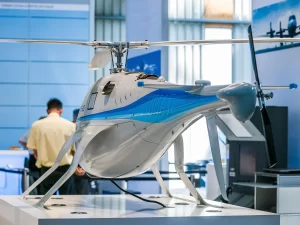It might sound counterintuitive, but thrift is now big business across the world. And thrifting – the practice of buying pre-owned fashion items – has become cool and glamorous. So, it’s probably no surprise that the fast-growing global second-hand fashion market will be worth around USD $350 billion in the next four years as pre-owned and pre-loved fashion becomes more of a status symbol for elegance, style and sustainability.
In many ways, it’s been adopted as a reaction to the samey-ness of ubiquitous brands – H&M and Zara have successfully exported their Scandinavian and Mediterranean lifestyles around the world, available from an out-of-town retail park somewhere near you. But that leaves many consumers desperately craving some long-lost originality.
After all, nothing says style, elegance and status quite like an effortlessly glamorous clothes horse who can nonchalantly bat away a compliment – “that dress looks fabulous on you, where on earth did you get it?” – with a stylishly dismissive “oh, this old thing? It’s ancient!” And whether social media is responsible for this shift or not, an obsession with not looking exactly like everybody else is definitely on the up.
So, what does the global and regional Gulf market look like, and why are people flocking to sites like Vinted and Depop?
And more to the point, is the thrifting trend here to stay? With worrying industry figures showing how punishingly hard it is to find a secondary-market startup in the fashion space that’s turning even a small profit, could the craze be as ephemeral, fickle and capricious as the history of fashion itself?
What is thrifting?
Thrifting refers to buying what’s often referred to as ‘gently used’ items from specialist or generalist second-hand sellers. This might be done digitally via online resale platforms or peer-to-peer recommerce sites – think Depop, Vinted, The Luxury Closet, Melltoo or eBay – or in-person at bricks-and-mortar shops. The thrifters’ expectation is that they’ll find a bargain under the age-old understanding that one person’s discounted junk is another’s invaluable treasure.
But beware: the vintage clothing market operating under the pre-owned banner appeals to a broader and often wealthier demographic than just millennials and Gen Z-ers. A quick look at luxury resale site Dora Maar – which sells pre-loved luxury items from designers like Alejandra Alonso Rojas and Oscar de la Renta – currently offers a second-hand Rojas jersey for USD $2,295. And although the sale gives the item a second life, it’s not exactly a snip.
Maybe it’s not surprising, given that the resale value of expensive consumer-fashion items is now a major factor for millennials and Gen Z-ers. According to research firm Statista, almost 60% of Gen Z-ers don’t buy fashion on impulse – they’ll only close a sale if they think the resale value makes it worth their trouble. So, these buyers are making considered purchases – less emotion, more analysis.
This trend in itself is a seismic shift in an industry that, for decades, has relied exclusively on image and emotion to sell over-priced brands, labels and lifestyles to eager buyers. Now, emotional must-haves are becoming considered might-haves, but only if the economics stack up.
The Gulf region’s secondary market
As mentioned elsewhere, take-up of the resale market among consumers in the Gulf has been sluggish, but not for want of new players in the region’s fashion sector. Startups like The Luxury Closet, Farfetch Second Life, 1954 by Rae Joseph and Melltoo, which recorded a 60% increase in sales in Q2 2020 and almost doubled year-on-year revenues, are encouraging Gulf populations out of their comfort zones. Nevertheless, the resale market in the region is only one-fifth of the size of Western counterparts.
Influencers such as Saudi Nirvana Abdul, Jordanian Hannah Rasekh and Rae Joseph might be able to cajole more Gulf Gen-Zers into circular fashion habits, but it’s likely that the Gulf will lag behind predictions elsewhere that over 15% of all fashion purchases will be from the pre-owned and thrifting market by the end of this decade.
And any relative change between the size of the consumer fashion and secondary markets won’t be appreciated fully without taking into account the effect inflation has had on Emiratis’ spending habits, even if the UAE’s large contingent of European expats bucks regional trends.
What’s driving the thrifting trend?
In brief, thrifting is driven primarily by price, sustainability, climate and the global fast-fashion industry. In terms of environmental impact and footprint, there isn’t much that’s good about fast-fashion, and pretty much everything needs to change. But it’s not entirely the industry’s fault; without demand, there’d be no supply, problem solved.
It’s worth considering the terrifyingly dynamic nature of the fast-fashion industry model – one in which players need to stay super-nimble and agile in order to jump on unpredictable trends before they happen in the mass market. In that context, it’s easy to see why environmental concerns might be secondary to relentless demands to stylishly clothe the world’s 8 billion potential customers. The current reality is that buyers have come to expect affordable, even cheap, single-use throw-away fashion products produced at break-neck speed. As a result, the primary retail market in the UAE grew by more than 6% last year, and although estimates vary considerably, production levels in absolute terms – the sheer volume, weight and quantity of clothing items manufactured around the globe – has grown by between 50% and 100% since 2000.
That’s partly because of poor utilisation rates among consumers. The United Nations’ Environment Programme has calculated that consumers now buy 60% more clothing items than they need and wear them for only half as long as they could before throwing them out.
But premature disposal is just part of the problem. Production and distribution add to the industry’s environmental footprint, but when consumers treat fast-fashion clothing as single-use accessories, an already questionable environmental impact becomes an even more drastic cost. For non-organic cotton, it takes almost 3,000 litres of water to produce just one cotton T-shirt.
Why does this bother conscientious millennials, Gen Z-ers and some older segments of society? Well, that’s easy when you look at how precious water is around the world. The water demand for India’s cotton exports just a decade ago, for example, amounted to an incredible 85% of what it would take to provide the country’s 1.5-billion population with 100 litres of water per day. And that’s in a place where around 100 million people, or 6% of the population, don’t even have access to any clean, safe water.
Beware greenwashing
The Swedish resale site Sellpy’s expansion was enabled by way of a strategic partnership with H&M, which profits exclusively from the sale of, you guessed it, vast quantities of brand-new fast-fashion items. As the UK’s BBC reports, a dirty secret lurks in some corners of the resale secondary market: namely, despite fabricating a reputation as an environmentally friendly alternative to fast fashion, the secondary market is sometimes subsidised by new sales in the primary retail market.
What’s more, labour-intensive processes and high labour costs have contributed to an almost universal absence of profit from the secondary-fashion sector, despite growth in the market’s overall value, as well as situations in which mint clothing has ended up cheaper than its repurposed counterparts.
What’s the solution?
Extending the useful life of a fashion item by just nine months would reduce waste, CO2 emissions and water waste by up to 30% and, according to some industry sources, would also save over USD $6 billion in the resources expended in supplying and disposing of fast-fashion items.
For the most part, thrifting is good for your bank balance, personal identity, originality, style status and climate credentials. But is it sustainable in terms of the highly unpredictable fads in fashion? And how long can the current business model survive relentless losses without government help?
And in a world dominated by online retailers like Amazon, will it remain a niche preoccupation limited to dedicated but ultimately niche followers of fashion?
Go buy second hand and watch this space.



